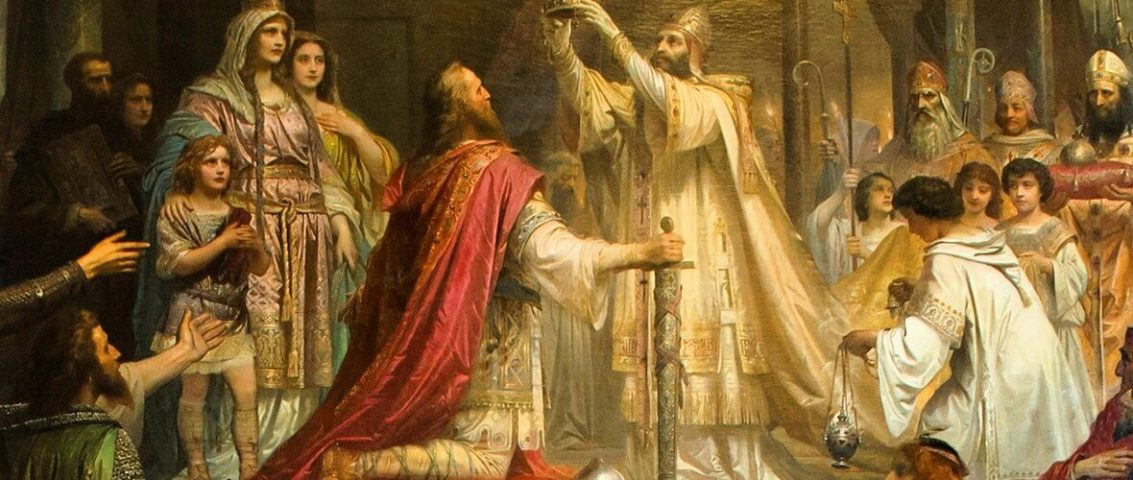By Phillip Campbell, Catholic Family News, October 29, 2023
Phillip Campbell is history teacher for Homeschool Connections and the author of numerous works of Catholic history. He is best known for the Story of Civilization books from TAN Books. …
The Feast of Christ the King calls to mind the authority of Jesus Christ over the kingdoms of men. But since we live in an age that has rejected both monarchical models of government and the religious orientation of the state, much of the rich symbolism of this truth has become incomprehensible in the age of democracy. In this article we shall begin to remedy this by conducting a brief survey of coronation rites of East and West during the first millennium to see how God’s rulership was invoked as a model for the earthly reign of Christian kings.
Byzantine Coronation Rites
Let us begin in the East. Distinctively Christian coronation rites in Byzantium date from the 5th century. The first emperor crowned by the Patriarch of Constantinople was Marcian in 450, although the coronation ceremony seems to have been relatively simple. By the time of Leo II (473) the ceremony had evolved to include liturgical prayers. At the coronation of Anastasius in 490 the prayers of the Patriarch and presentation of the Gospels were prominent. The Patriarch then administered an oral and written oath to the emperor-elect, making him swear that he would “keep the faith entire and introduce no novelty into the Church.”[1] The coronation began to reflect the Christian sensibility that the monarch was, in some sense, a protector of the Church tasked with promoting the reign of Christ. …
Continued reading >>>>







